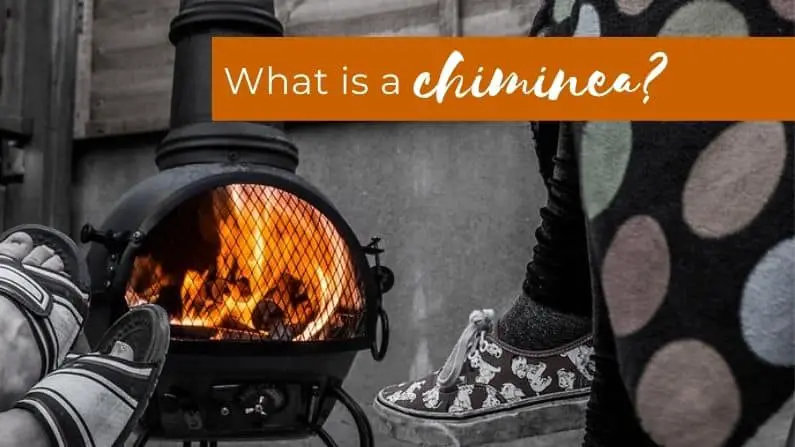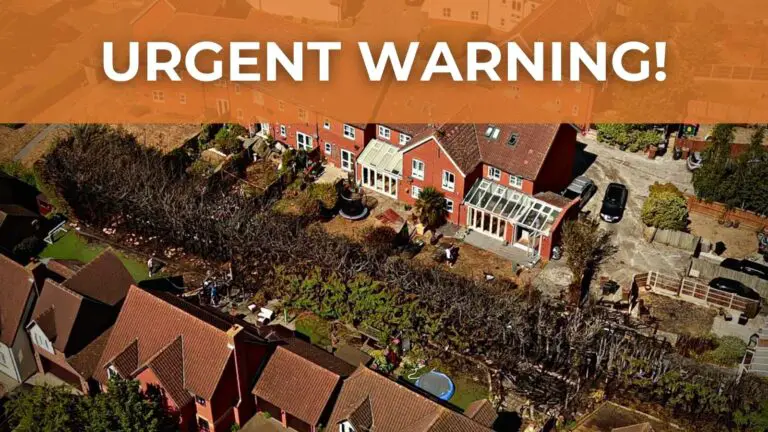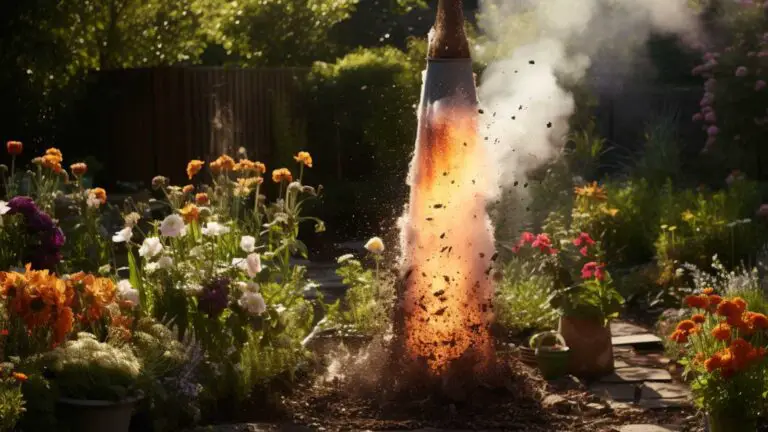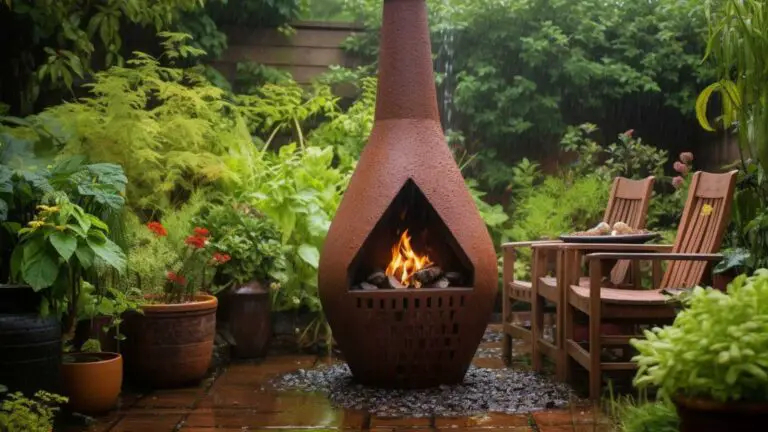What is a Chiminea? Your Questions Answered
A chiminea is a small, freestanding, portable outdoor fireplace that is open in the front, with a chimney on top. The chiminea (also spelt chimenea or chimnea) is now commonly used in gardens as a heat source, outdoor oven, and focal point. They are decorative and charming additions to any garden.
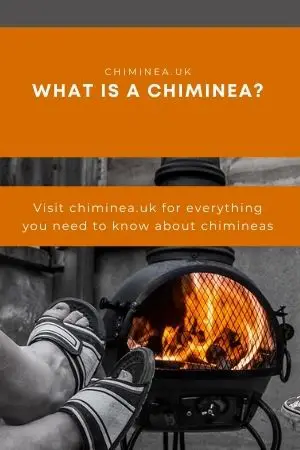
Chimineas have been a focal point for gathering in gardens for centuries and now have become wildly popular as they are an attractive outdoor heat source that makes it safer to meet friends and family outside in today’s climate.
Where do Chimineas Originate from?
The term chimenea literally means ‘chimney’ in Spanish. The chiminea is believed to have originated in Mexico as early as the 16th century and was used for heating and cooking.
Traditionally chimineas were made out of clay and used indoors as the main fireplace in the home where food was cooked and families gathered. Similar to wood-burning stoves in Europe, they were essential to everyday life.
What Different Types of Chiminea are There?
Chimineas now come in lots of different forms – check the picture above for some examples and the list below for different types:
- Clay chiminea
- Cast iron chiminea
- Steel chiminea
- Cast aluminium chiminea
Different materials used for chimineas have different qualities. Clay was the traditional material of choice. Clay chimineas look great and they are often much cheaper than metal varieties.
Clay chimineas are limited to burning wood because fuels that burn hotter can crack the structure. This can make cooking limited unless you wrap everything up in foil and chuck it in! However, some people use a variety of more aromatic wood like hickory and find that it can enhance the flavour of food.
One of the main benefits of choosing a metal chiminea is that they are generally easier to cook with as you can use charcoal in them (usually – always follow manufacturers guidelines).
They also offer a distinct design look and they tend to last longer than clay varieties.
Metal chimineas, get a lot hotter than clay chimineas and are therefore a popular choice as a patio heater. Obviously metal conducts heat better than clay and cast iron chimineas are the best overall if heat is your priority.
Be mindful of children and animals and teach them quickly about the dangers of heat – even a touch of the back of it could lead to a serious burn. Using a shield is a great way to control this if it is a concern.
Chimineas come in all different sizes from tabletop stoves used as candle holders to massive behemoths that can be used for cooking or as striking architectural accents in your garden.
The variety of styles is amazing, ranging from the plain and conservative to truly ornate clay work.
There are many wonderful variations on the more traditional chiminea designs and boundaries are always being pushed with more contemporary chimineas – there is a company that will laser cut your very own design into a steel chiminea!
What are the Benefits of a Chiminea?
There are many benefits to owning a chiminea and they have become extremely popular now as an easy way to have an outside fire without the smoke surrounding the firepit or a limited BBQ that’s only used for cooking.
- Creates a safe, attractive outdoor space to socialise
- Provides outdoor heating
- Allows you to cook outside
- Adds stacks of character to any patio or garden
- Allows you to experience building and sustaining your very own fire – a lost skill by many of us
- A group activity that can be fun outdoors even in colder months
- No worries about local smoke laws as in the UK even in smoke-controlled areas, chimineas are permitted as long as they are outdoors
They are particularly ideal for small, urban gardens – check out more in my article best small chimineas for an urban patio.
How are Chimineas Made?
Traditionally made out of clay, chimineas are now available in clay, and metal forms.
For most chimineas, the bulbous shape for the fire bowl is made separately from the chimney part and they are then brought together. This can be a weak point for cracks on chimineas, and you should never lift a chiminea by the stack (chimney).
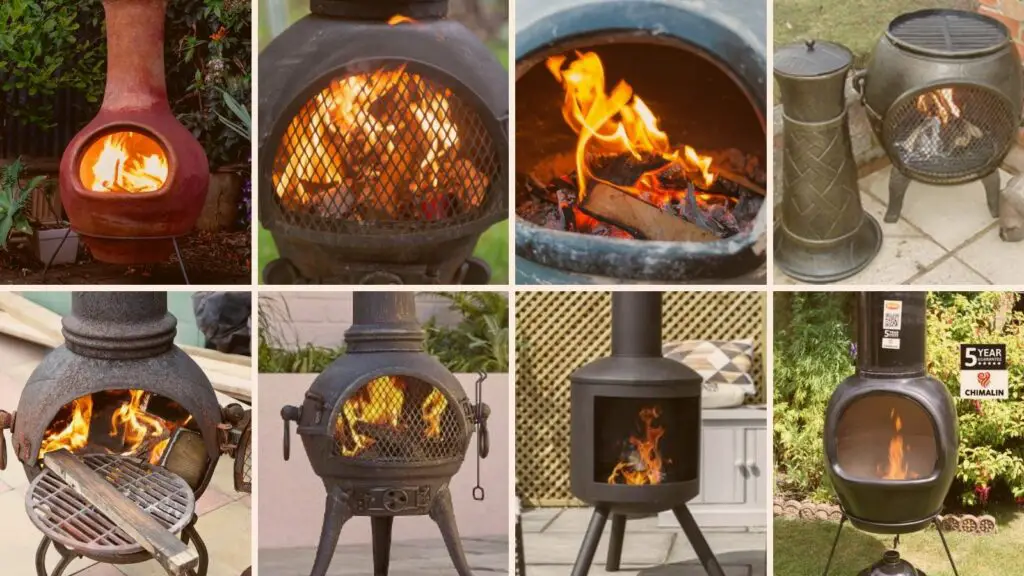
How Does a Chiminea Work?
The beauty of the chiminea is in its shape – the bulbous lower area perfect for holding the fire and the stack keeps smoke directed upwards and away from those eyes.
Chimineas are designed to be efficient; small fireplaces and the shape of the chiminea allow for that airflow to come in through the mouth and up the chimney. This makes it easy, even for a beginner to start and maintain a fire.
Try not to burn towering infernos in your chiminea as you are likely to damage the structure if it gets too hot.
They usually come with a cover that sits on top of the chimney. They ensure that water or debris doesn’t get into the stack when it’s not in use. These must be removed when you light a fire.
Can I legally Use a Chiminea in the UK?
Yes! The good news is that even if you live within a smoke-controlled area, chimineas are considered an exempt appliance and outside BBQs, fire pits, and chimineas are fine to use in your garden.
2 things you need to be aware of…
If you’re burning anything inside a structure with a chimney, for example, a summerhouse or a large shed, then you need to follow the same rules as burning in a home fireplace and you may only burn authorised fuels – find a list of these here: https://smokecontrol.defra.gov.uk/fuels.php
‘Any of these appliances that release smoke through a chimney of a building – for example a summerhouse – can only burn authorised fuel or must be exempt.’
– gov.uk
The second thing you need to think about is not being a nuisance to neighbours. If you’re out there burning up a storm every night and smoke is billowing into your neighbour’s garden, then they have every right to complain and you’ll be asked to stop.
Common sense and consideration for others is the way to go here. If in doubt, talk to your neighbours about it and invite them round to enjoy your chiminea!
What to Burn in a Chiminea?
For cast iron or other metal chimineas, you can burn wood or charcoal. A clay chiminea should only burn wood as other fuel will simply get too hot and crack the clay structure.
There are a few things to consider when choosing what wood to burn in your chiminea:
- The size of the wood – remember chimineas are designed to burn small fires efficiently and so need smaller pieces of wood.
- Make sure any wood you cut yourself is left to cure (dry out) ideally for 6 months before you use it. Wood that’s not cured will smoke like crazy.
- Do not use treated wood – they can release horrible smells and toxic chemicals
Where Should I Put my Chiminea?
- You should NOT put your chiminea near anything flammable! We had to say it. Look closely at your outdoor space. Is there a spot where it can be placed safely?
- Make sure it’s a flat surface for practical and safety reasons.
- Wherever you decide to put it, think long term. You don’t want to be move your chiminea as it’s heavy, awkward to lift and of course the more you move it, the more likely it is to get damaged.
- Don’t forget to look up as that’s where the smoke is going. Don’t place your chiminea under low-hanging branches or under any flammable structure. Sparks can escape the top of the stack, and you don’t want to burn your house (or your cul-de-sac) down! Also, do not place them under a canopy or gazebo as well as a risk of setting them on fire there is also carbon monoxide to consider but that will escape quickly if your chiminea is under any form of covering.
- Next, think of the surface you are placing it on. Patios or any stone surface are perfect and technically ok to put on grass, but if your lawn is particularly dry, that’s probably not going to be a great solution long term…and then there is the damage you will do to the grass. You can place it on a wooden deck but create a hearth area with something like flagstone or other fire-resistant material underneath.
- Another consideration is to put your chiminea somewhere that will be visible from your house – you should never leave a fire unattended and this will help tremendously if you can keep an eye on it.
- Consider the fact that your chiminea will likely get very hot. You may need to invest in a fire shield if you have children or pets that could get too close.
You might like this article is it safe to use a chiminea on a wooden deck?
How to Look After Your Chiminea
- Keep it covered when not in use
- Never use water to extinguish a chiminea fire (except in an emergency). Water will drop the temperature rapidly and you could crack your chiminea. It also leaves your chiminea wet inside and you’ll need to dry it out completely before using it again.
- Keep it away from water in general and only use water to put out your chiminea fire in an emergency.
- Clay chimineas should have sand in the bottom from preventing the basin where the fire sits from getting too hot.
- Do not use any form of heat accelerant as it will result in your chiminea getting too hot and prone to cracking and damage.
- Clay chimineas should be cured before you go for a larger fire. 3 or 4 small fires with just tinder should be lit and left to burn out and the chiminea should be completely cooled before a larger fire is lit. This should prevent heat shock and you’ll have less chance of cracking your chiminea just as your mouth had started to water at the prospect of roasting some marshmallows.
- Don’t have your fire so big that it burns into the chimney stack. This is a quick way to shorten the life of your chiminea as it will simply get too hot and crack.
For more information on looking after your chiminea, check my article on how to cure a clay chiminea.
Chiminea Safety
- Always keep watch on a lit fire, it should never be left unattended.
- Be mindful of your smoke and considerate of neighbours.
- Remember to consider how to manage your chiminea around children and animals. Metal chimineas, in particular, can be extremely hot and so should have a guard.
- Always use heat resistant gloves when working with your chiminea.
- Keep your fuel away from your chiminea fire. Don’t forget about flying embers that can easily ignite dry wood nearby.
What Else Will I Need for My Chiminea?
There are a few things that you’ll need to get so you can use your chiminea:
- For clay chimineas – sand, lava rock or pea gravel for the bottom of the bowl and maybe some fire bricks for inside.
- Heat-resistant gloves – essential for managing your chiminea once it’s lit.
- Chiminea cover – the British weather will make short work of damaging your chiminea if it gets wet.
- Long matches or firelighters will make lighting easier.
- Fire tools – as with managing any fire some basic tools like fire rake, poker etc will make managing your chiminea fire easier. Many cast iron chimineas may come with a multi-purpose tool particularly if they have a fire grate in front.
Spelling and Pronunciation
Chiminea, the literal translation for chimney in Spanish, can be spelled a few different ways that are interchangeable; chiminea and chimenea. There are also some people who refer to them as chimneas, but they are all essentially the same thing and these terms are interchangeable. For everything you need to know about pronouncing chiminea, check this article.
You might also like Best Extra-Large Chimineas.
I hope this article has helped you learn more about lovely chimineas. Check out my chiminea wiki of you’re a beginner.

